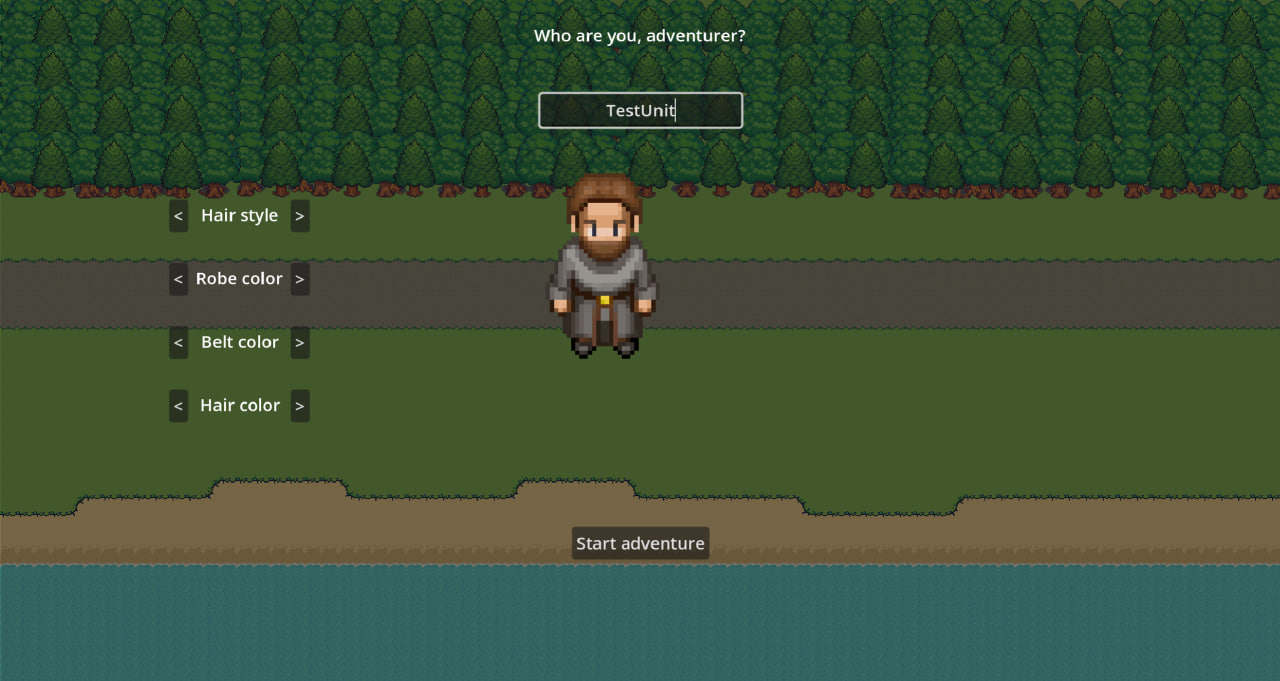
In any RPG, it is important to give players the opportunity to customize their experience and make it truly unique. In 'Exiled Apprentice', player can personalize their adventurer by changing clothing, colors and name. This customization opportunity makes each playthrough feel distinctive.
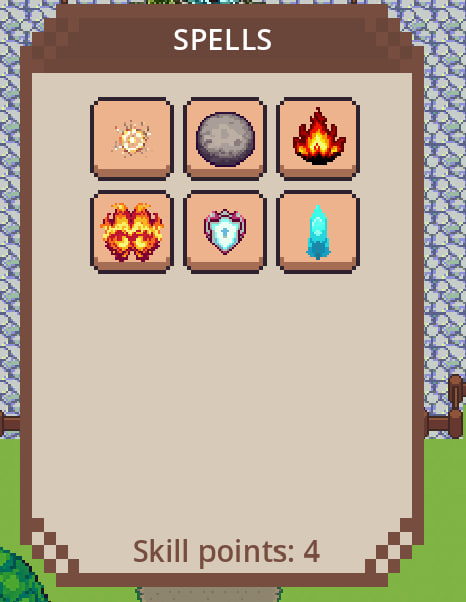
In 'Exiled Apprentice', players have the opportunity to progress and evolve into a powerful wizard as they journey through the game. The core of this progression lies in a leveling system where, upon reaching each new level, players earn a skill point. These skill points can be invested to unlock a variety of abilities, allowing for a personalized approach to combat and strategy.
The game features six unique abilities, categorized into two main types: defensive and offensive. Defensive abilities offer essential support, enabling players to restore health or absorb incoming damage, enhancing their resilience in tough battles. Offensive abilities, on the other hand, are designed to maximize damage output, with options for both area-of-effect and single-target attacks. These diverse abilities provide flexibility, allowing each player to tailor their playstyle and make each playthrough unique and dynamic.
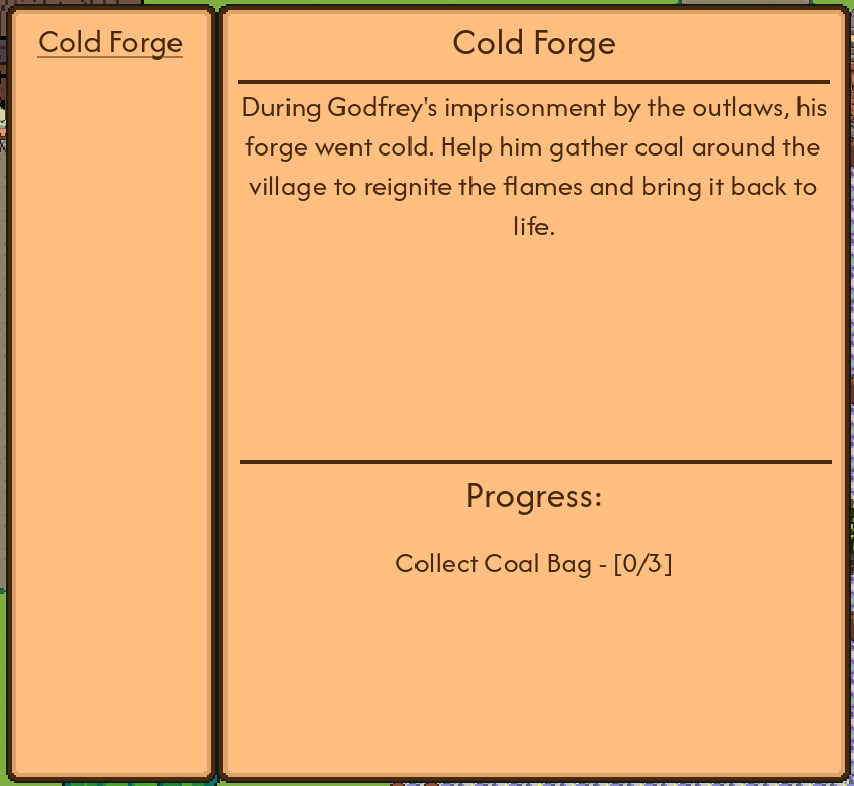
The storyline in Exiled Apprentice is a central part of the experience, as the entire game is narrative-driven. The main story takes around 1.5 hours to complete, represented by over 20 quests, more than 200 lines of dialogue, and multiple minigames and unique scenarios.
Throughout the journey, players grow into a stronger wizard, facing increasingly complex challenges while aiding the villagers of Arudil. Crafting this story from scratch was a rewarding experience, involving everything from writing dialogue and creating quests to crafting titles and hidden surprises. There are even easter eggs waiting to be discovered, adding an extra layer of fun and immersion to the world.
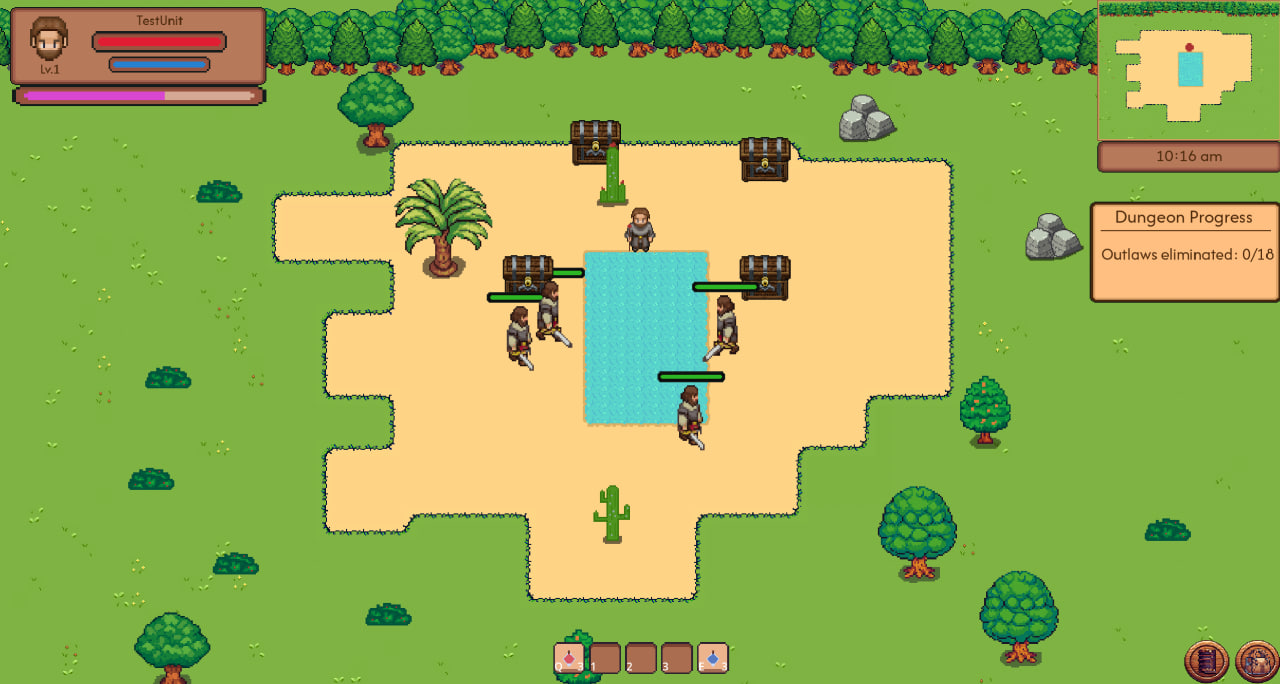
Each time players enter a dungeon in Exiled Apprentice, they encounter a unique layout. The dungeon is generated from a set of patterns, and each time it’s created, a pattern is randomly selected from this array. These patterns vary in room count and layout direction, ensuring that even if the same pattern is selected, the dungeon won’t be identical.
Additionally, each room within a pattern is randomly chosen from a separate array of pre-designed rooms, and every room is populated with a random selection of objects and enemies.
In short, multiple layers of randomness create a fresh and unique experience every time players delve into the dungeon, keeping the adventure unpredictable and engaging.
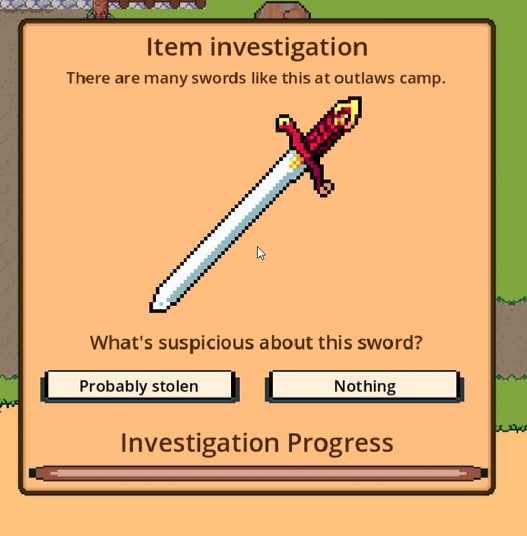
Throughout the storyline, players will encounter a variety of quests. Some are familiar tasks, like eliminating enemies or collecting items, while others introduce unique locations and activities.
In certain quests, players will engage in investigations, requiring close attention to details, dialogue, and knowledge of the game’s lore. Other quests lead to intriguing locations where further investigation is necessary. Additionally, the game includes mini-games like negotiating with imprisoned characters and a lockpicking challenge, adding variety and depth to the adventure.
'Exiled Apprentice' is a game that empowers players to shape their experience in multiple ways. While certain aspects, like dungeon generation, are determined by the game, players have substantial control over their journey. With the combat and ability systems, players can tailor their playstyle, adapting abilities and strategies to fit their preferences, making each playthrough uniquely personal.
The combat system in 'Exiled Apprentice' is centered around mid-range spells. Each player starts with a default spell linked to their staff and can choose up to three additional spells unlocked through leveling. Combat demands focus and caution, as the protagonist is still just an apprentice wizard. As mentioned earlier, abilities include both offensive and defensive options, allowing players to adapt their strategies to each encounter. Each fight requires thoughtful planning, giving players the flexibility to approach battles in different ways.
There are three enemy types in 'Exiled Apprentice': a fast but weak melee attacker, a mid-range archer, and a slow but powerful melee foe. Enemies are typically mixed within the dungeon, so each encounter often includes all types, adding to the challenge. The enemies operate with a simple AI, cycling through three states - idle, chasing the player, and attacking. Additionally, archers attempt to retreat if the player gets too close, adding an extra layer of strategy to the combat.
As in other RPGs, players in 'Exiled Apprentice' can find or purchase consumables to aid them in critical situations. Consumables fall into two categories: mana restorers and health restorers. Both types share a cooldown, requiring players to strategize when to use them for maximum effect.
Though there are only six abilities in 'Exiled Apprentice', they offer players a variety of playstyle options. Some abilities work effectively at long range, allowing players to keep a safe distance and adopt a slower, risk-free approach. Conversely, other abilities deal powerful area-of-effect damage but require close range, introducing higher risk for greater reward. By combining these offensive abilities, players can craft a unique combat style that suits their preferences.
During playtesting, I received feedback that some enemies didn’t pose enough of a threat, so I went through several iterations to adjust their balance. Initially, I avoided changing damage or health, focusing instead on making enemies feel more challenging by increasing their aggro radius and movement speed. This change immediately made encounters more intense, as players could no longer bypass enemies easily. Based on further feedback, I also made it so players couldn’t exit a dungeon without clearing all enemies.
In the final round of testing, I made adjustments to enemy damage - some were too powerful, while others were too weak. Now, in the release version, the balance feels just right. With a strategic approach, players can take on large groups and survive, though there’s still a significant risk of making costly mistakes.
Balancing abilities is challenging! In the early stages, players leaned toward the same set of abilities because they were simply overpowered. Fortunately, I had various tools to fine-tune the balance, such as adjusting cooldowns, mana costs, damage, and effects.
For instance, the default spell, Fireball, initially dealt damage to a single target, which felt underwhelming. I changed it to an area-of-effect spell, and now it’s effective enough that players sometimes choose to cast multiple Fireballs instead of using a specialized skill. Another example is the Avalanche spell - it remains powerful, but after the first iteration, I introduced a twist: now, while casting Avalanche, the player cannot move. This adjustment keeps the spell potent but adds a layer of risk, as players are vulnerable during the cast.
The initial UI concept was detailed and informative, so playtesting didn’t reveal much negative feedback. However, some adjustments were made. For example, investigations were unclear - players couldn’t easily tell if they were making correct or incorrect choices. To address this, I added a progress bar as a visual hint, which immediately improved players’ performance during investigations.
The minimap remains an essential feature, but initially, it displayed enemies. This felt off, as it allowed players to anticipate fights without actually spotting the enemies, removing some of the challenge. Later in development, I removed enemies from the minimap, adding an element of surprise to each encounter and keeping players a bit nervous.
• Play in browser at Itch.Io: Link
I originally set out to create this game as a way to learn new things about designing systems I hadn’t built from scratch before. Exiled Apprentice is focused on combat, abilities, and storytelling. I’m genuinely proud of the story I crafted, with all its dialogues, quests, and twists; I think it turned out well, even if it’s just an hour and a half of gameplay. I also gained hands-on experience designing enemies and abilities, which sounded straightforward in theory but proved challenging in practice.
Overall, I’m really pleased with this project. The results are solid, and the positive feedback I’ve received makes me proud of this little creation. I’ve learned valuable lessons, though there’s still room for improvement. I’m confident there are more ways to refine enemy behavior to make combat feel a bit more challenging.
• Game engine: Godot
• Engine version: 4.3
• Coding language: GDScript
• Other tools: Aseprite (pixel art)




